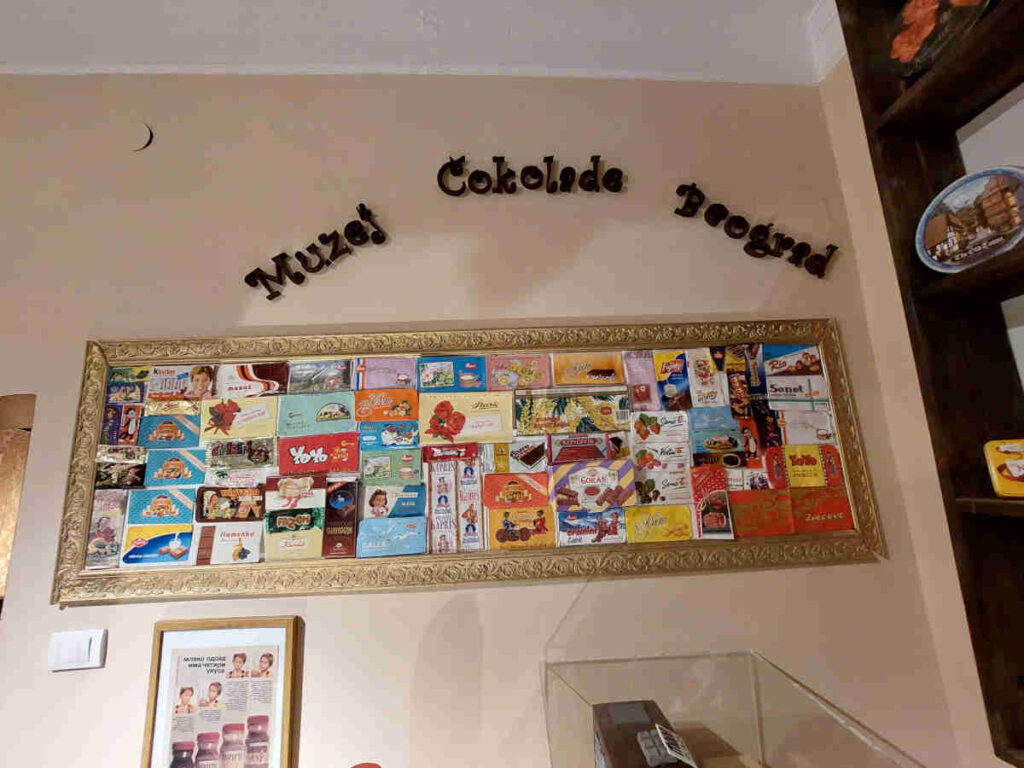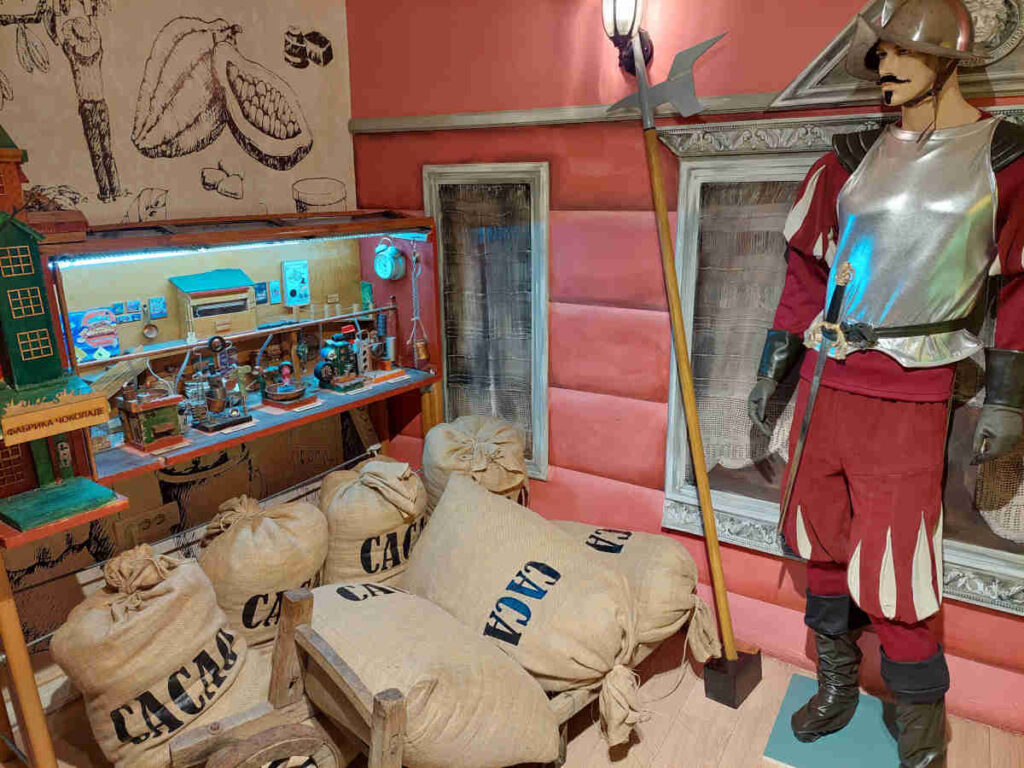The Chocolate Museum in Belgrade (Muzej čokolade), situated in the city center, is a charming destination for those eager to explore the history and production processes of chocolate. Going beyond traditional one-way learning, participants have the chance to craft their own chocolate in an engaging workshop at the tour’s conclusion. Allow me to guide you through this delightful and immersive museum experience suitable for visitors of all ages.

1. Learning the Origin of Chocolate
In the first part of the tour, in a room decorated as a rainforest, the guide told us about the history of chocolate from its ancient Mesoamerican origins to its evolution into the delectable forms we enjoy today. We got to taste the bitterness of pure crumbled cocoa as the guide showed us the cocoa bean and explained how chocolate is made from it.

2. Tasting Dark, White, and Pink Chocolate
One of the highlights of the Chocolate Museum is its commitment to creating an interactive and engaging experience. Visitors are not just passive observers; they are encouraged to touch, smell, and taste various chocolate varieties. From cocoa bean to chocolate bar, the museum guides guests through the chocolate-making process, allowing them to appreciate the craftsmanship involved in creating this heavenly delight.

A trip to a chocolate museum wouldn’t be fully satisfying without treating your taste buds to a delightful chocolate tasting session. In the second room, we delved into the nuances of dark, white, and pink chocolate, savoring each type to understand their unique flavors. It was a tasty experience combined with insights into the craftsmanship and evolution of chocolate.
3. The History of Chocolate in Serbia
As the tour proceeded, we got to hear about the family that first started producing chocolate in Serbia — the Šonda family that came to Belgrade from Greece. The site of their production facilities established in 1902 is where the Mona Plaza Hotel is now, in the neighborhood of Dorćol. The Šonda family was very innovative and business-oriented, so they even had a chocolate vending machine installed in Belgrade at the time (the machine is exhibited in the museum).

The room also showcases numerous chocolate packages through the years in Serbia (Yugoslavia). An interesting tidbit we discovered was that the familiar face on Kinder chocolate (you can spot it in the upper left corner of the below photo) was actually a young model from Belgrade, specifically from the Banovo Brdo neighborhood.

4. Making Your Own Chocolate
The most interactive and enjoyable part of the tour was the final workshop, where we had the chance to craft our own chocolate. Although this segment is optional, I highly recommend paying for the complete package. The guides poured melted chocolate into molds – and we got to pick whether we preferred dark, regular, white, or a mix. The real fun began when we could decorate our chocolate with an assortment of sweets, wearing culinary hats and aprons. It’s a creative and tasty experience worth the extra investment.

5. The Hot Chocolate Goodbye
While we patiently waited for our personalized chocolates to cool and solidify, we were treated to a delicious hot chocolate drink. We took this time to unwind, exploring the gift shop area and marveling at chocolate sculptures, including one depicting the St. Sava Temple.

Conclusion
The Chocolate Museum offers a delightful one-hour experience, especially well-suited for families with children. If you’re in Belgrade for a short visit, I would definitely prioritize visiting the National Museum, and then the Nikola Tesla Museum. However, if you have more time to spare, the Chocolate Museum is a fun and enjoyable destination to spend your afternoon, especially on a rainy day.
Guided tours commence every hour and are offered in both Serbian and English languages. For more details about ticket pricing and schedule visit the Chocolate Museum website.


Leave a Reply